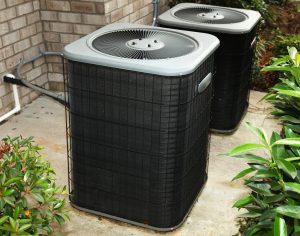
Air conditioners are complex machines. They’re complex enough to warrant professional service whenever something goes wrong with them. It doesn’t matter how many DIY videos you find on the internet about making minor repairs yourself, it’s always going to be better with professional HVAC service in Manhattan, MT.
That being said, air conditioners aren’t so complex that you can’t get a basic gist of how they work. Their components are fairly straightforward, and just like the interior components of a car, you might be able to save some money by learning a thing or two.
Today, we’re going to talk about the most important components of an air conditioner. From the compressor to the refrigerant lines, we’ll talk about what these components do and how they function in the greater cooling process. Once you know a thing or two about AC technology, it’ll be easier to make thoughtful decisions about the service your system requires.
Three Major Components
There are three important components of an air conditioner, we’d like to touch on. This crash course on air conditioning is not meant to make you an expert on your system, only to help give you a better grasp of what exactly is happening when you change your thermostat.
The Coils
There are two main coils your air conditioner utilizes when completing the cooling process. One of them is an evaporator coil, tasked with evaporating refrigerant which draws in heat from your house. The other one is your condenser coil, located in the outside cabinet. The condenser coil is supposed to condense the refrigerant into liquid form, releasing heat outside where it belongs!
These two coils cycle refrigerant between each other consistently. This is where the cooling process takes place, and it’s important to understand that evaporation and condensation are the two main ways your home gets cooled. When there’s an issue with these coils, either from dirt or debris covering them up, the whole cooling process suffers.
The Compressor
How does the coolant that’s cycling between the coils go from liquid to gas? Well, this process is completed by a component called the compressor. The compressor is easily thought of as the heart of an air conditioner since the cooling process doesn’t happen without it.
By using electricity, a compressor pressurizes the refrigerant and cycles it between the coils. This is what allows the condenser and evaporator coils to perform their magic and extract heat from your home. If your system is having problems with the compressor, there is some bad news. Compressors are usually expensive fixes, so you might need to invest in a whole system replacement.
Refrigerant Lines
If the compressor is the heart of your air conditioner, then the refrigerant is the blood. It’s responsible for the transfer of heat from inside your home to the outside through the coils. Without refrigerant, the cooling process simply can’t take place. Refrigerant is also not meant to be consumed, so if your system has a low level of it, there’s definitely a leak.
Make sure a professional is the only one who handles your refrigerant. Whether you need a leak patched in your system or a refrigerant recharge, don’t let an amateur deal with your refrigerant.
Have more questions about your air conditioner? Call Ambient Air Solutions today. Simplifying Heating & Cooling.
